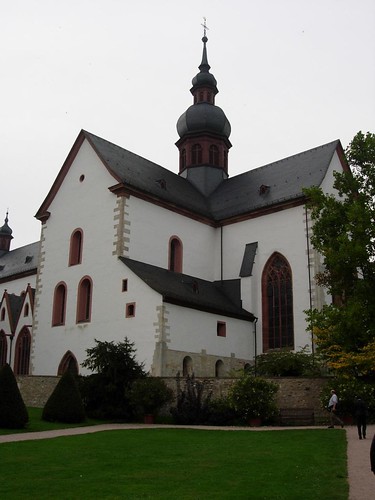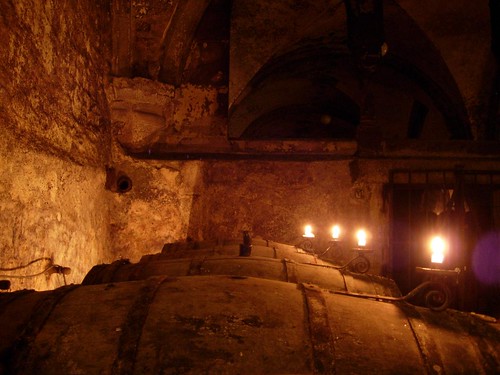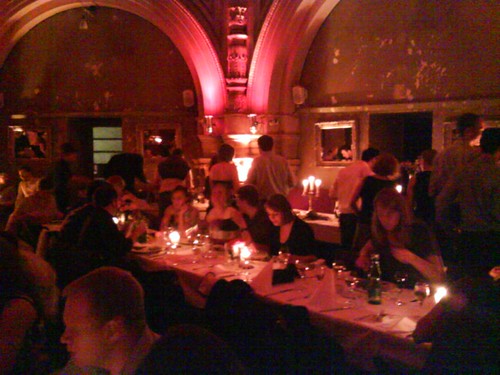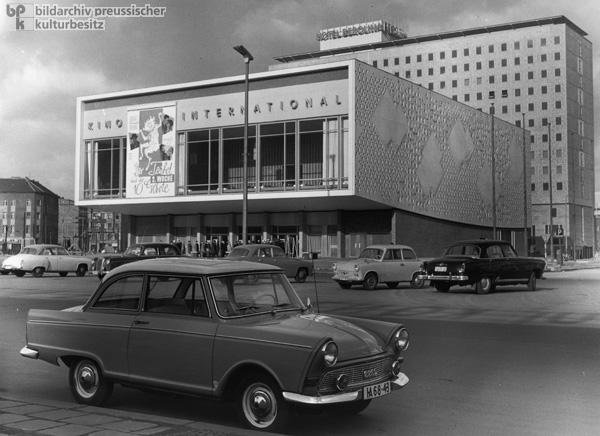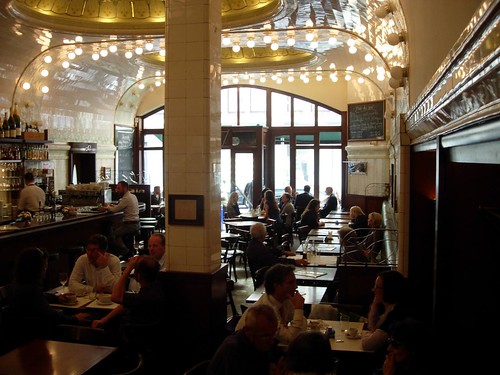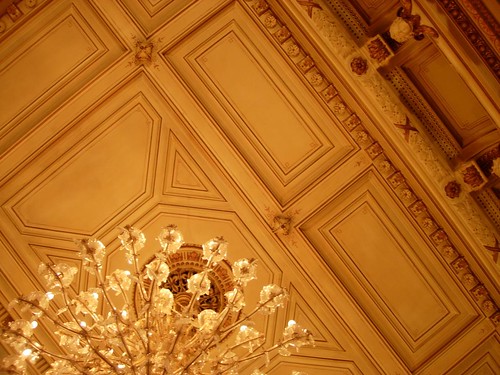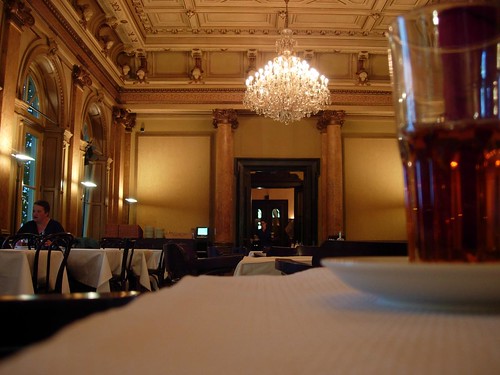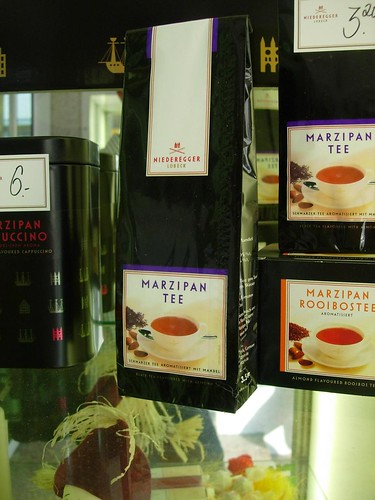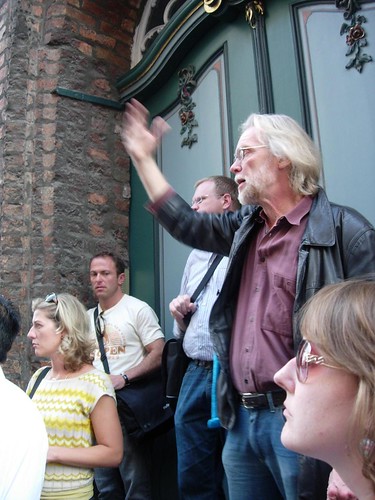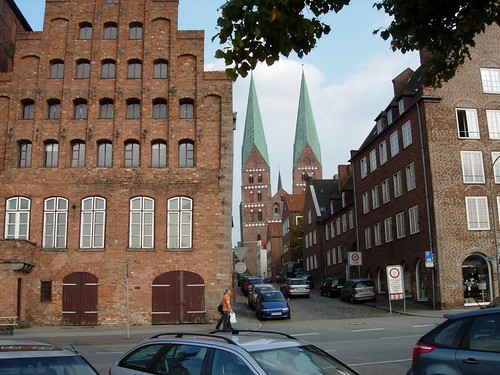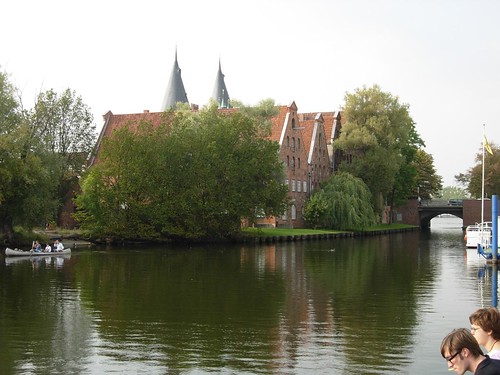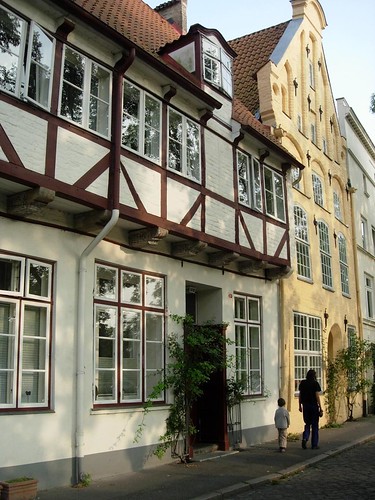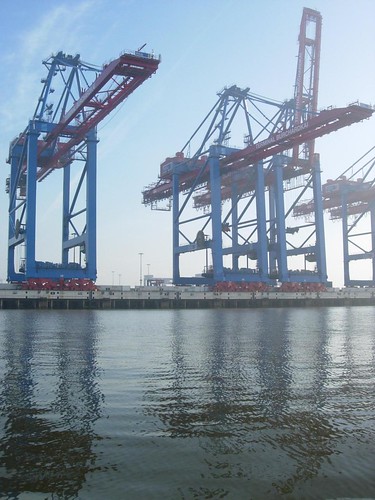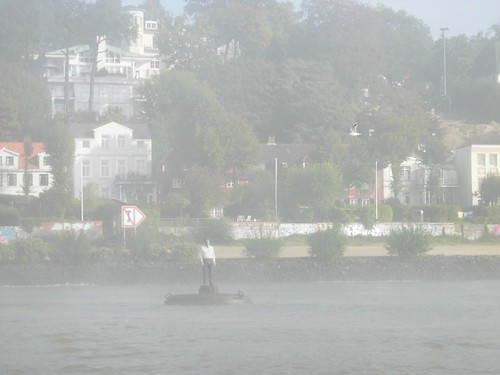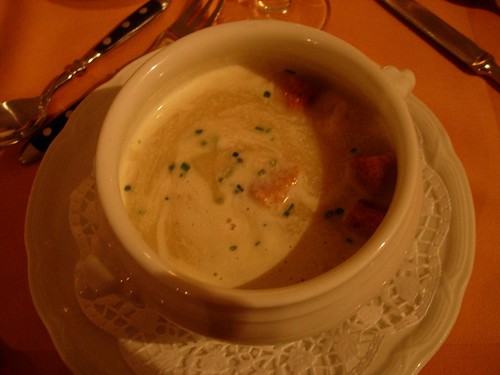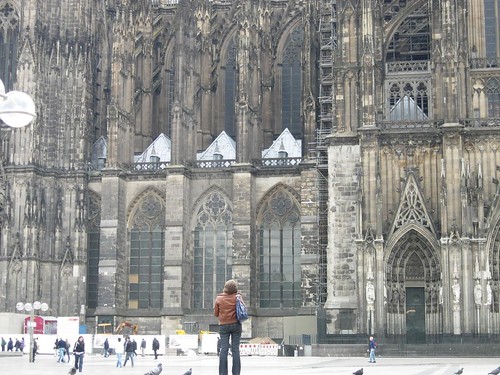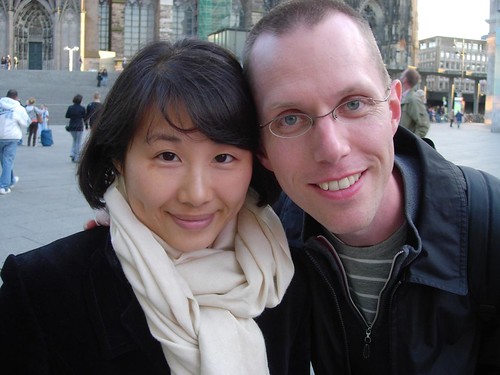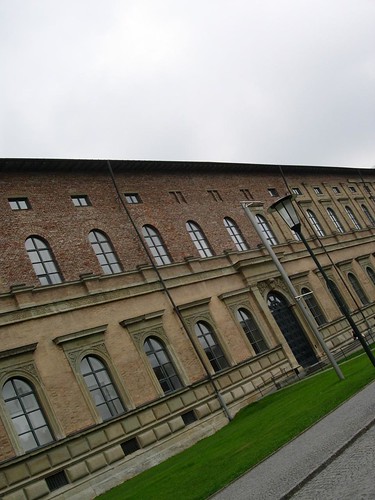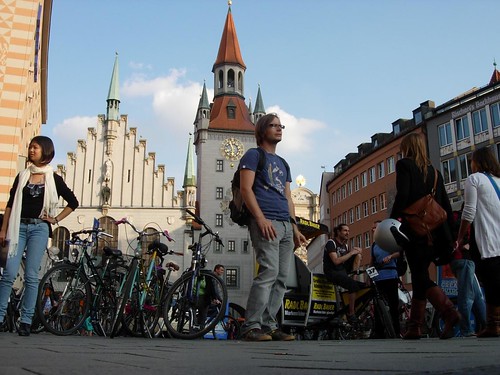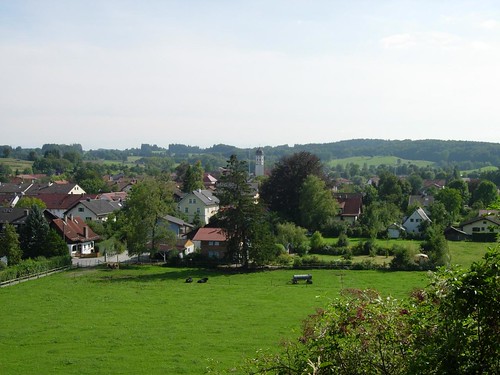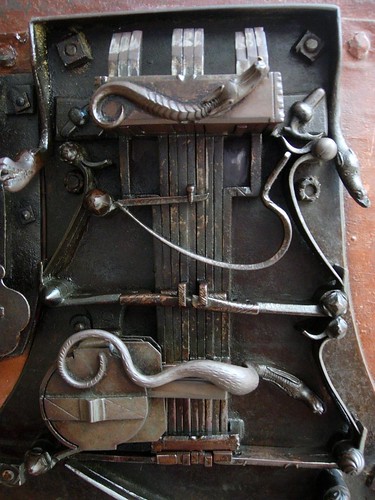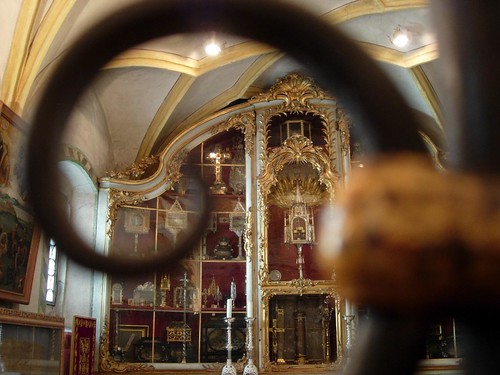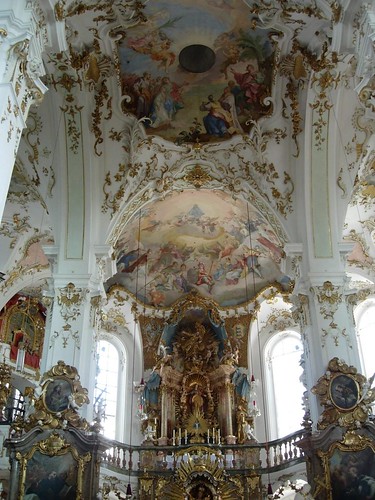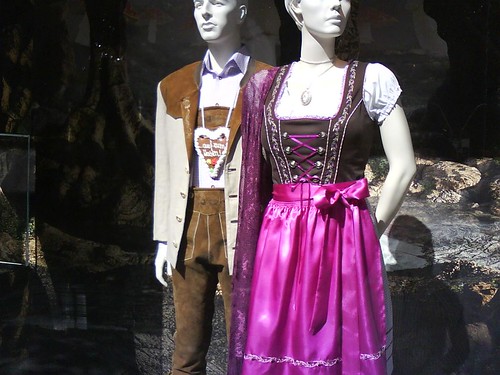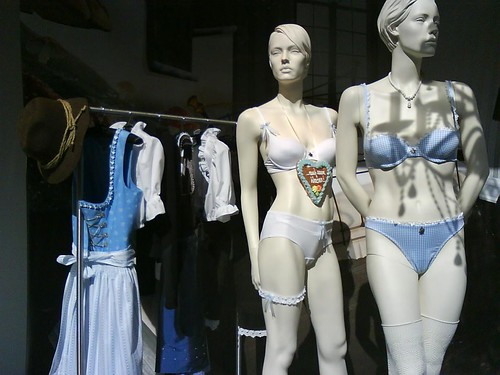24 September: Farewell party at Rodeo Restaurant
Volksbühne
The Bosch Fellows’ first day back in Berlin (23 September) focused on subjects related to the former German Democratic Republic (DDR). I took the liberty of joining a conversation at the Volksbühne (a theater in the former East) billed as “Culture in the DDR.” Our hosts were Stefan Rosinski, the theater’s head dramaturg, and another dramaturg, whose name I missed (but by process of elimination was probably Sabine Zielke).
We were led through a shabby but seemingly spacious backstage administrative area to an office that struck me as a DDR time capsule. The look was mid-century modernism, with flat wood paneling everywhere. Only one picture hung from the walls, a propaganda poster depicting Stalin:
Our host was Stefan Rosinski, dressed expensively in shades of black. His thick, graying mane reminded me of Beethoven throughout the conversation. Sabine Zielke held court on her own until he showed up, and then she barely said a word. (Welcome to the German workplace pecking order. I noticed on the Volksbühne website that the five male dramaturgs are listed before the two female dramaturgs.)
Theater History
Much of the conversation was a scattered history of theater in the DDR. A summary follows.
Fascism is hierarchical and centralized, and after 1945 the East German theater became hierarchical and centralized. There were theater training schools, and every graduate received an appointment to a theater, and could not be fired.
Old classics (e.g. Shakespeare) were a big part of the repertory, and were probably the least problematic plays to perform. Modern classics were hit or miss. Ibsen, for instance, was a bit too bourgeois for East German tastes. Contemporary authors faced a dilemma: Did they really want to paint a picture of the world around them? If so, was it safe to depict the world as it existed? Was it selling out to depict the world more palatably?
The arts developed along different lines in East and West Germany. Both nations sought to use culture to create a national identity, but in different ways. Architecture provides an easy example. As West Germany rebuilt, it sought a new, modern idiom that was unlike the architecture of the 1930s. As East Germany rebuilt, it sought to define a new socialist architecture.
In the 60s, theater in West Germany became more explicitly political. An example is the play Die Ermittlung (The Investigation) (1965) by Peter Weiss, a docudrama based on transcripts of the Auschwitz Trials.
A major event in East German theater was the 1965 production of The Dragon by Yevgeny Schwarz at Berlin's Deutsches Theater. It ran for 500 performances to full houses. I remember The Dragon from grad school. It's a fairy tale, and woefully obvious allegory of totalitarianism. (A town has learned to accommodate a tyrannical dragon.) Ziekle would have me believe that the DDR apparatchiks were so out of touch that they didn't get that they were the subject of criticism, and let the show go on. (I find that doubtful. An easier explanation is that they knew who to keep an eye on by seeing who went to see this play.)
(For information about Horst Sagert's designs for The Dragon, follow this link.)
In the 70s, resignation set in. Authors addressed private rather than topical themes. In the 80s, aesthetic forms took over.
Then in 1989 with the fall of the DDR, 30-40 years of divided and distinct theater history came to an end. Sabine Zielke, who unlike Stefan Rosinski lived in the East, chimed in to say that for the next two or three years everyone was in a perpetual state of confusion.
Reunification, and thus westernization, made it much more expensive to run a theater. The staff of the Oper Unter den Linden was cut from 1,000 to 500 employees.
The head of the Volksbühne made a decision that it was necessary to integrate as quickly as possible, and now has about a 50/50 split of employees from the former East and the former West. Other houses made other choices—it sounds like the Deutsches Theater is still largely an East German operation.
Berlin comprises two worlds sharing the same space. In Rosinski’s opinion, if Berlin could have, it would have chosen to be part of neither the East nor the West. After reunification, a dynamic of friendly competition emerged, as each theater attempts to do better work than its rivals’.
One consequence of having lived through the DDR (and I think Rosinski must have been referring to the former East Germans specifically) is that there is now an aversion to all systems—actor training, ticketing, subscriptions, etc.
Please, not Heiner Müller
A question Germans must wrestle with is what defines Germanness (“Was ist das Deutsche?”). There are significant cultural and linguistic variations that make it difficult to speak of a shared German identity. Rosinski’s interesting but problematic claim is that since Germans don’t really speak a shared language, the language they can all agree on is German as it is spoken on the stage, a semi-artificial construct analogous to BBC English. For this reason, and this is where his argument gets murky, Germans are unusually attached to the theater, and willing to support it even if they never attend, because the theater is an assertion of a shared cultural identity.
Because of this high level of public support, a theater is essentially a Behörde, a public authority. What this means is means theaters have endless freedom and are responsible to no one.
Toward the end of the conversation I asked what I knew was a fairly stinky question: What remains of the theater of the DDR, and please don’t tell me Heiner Müller. The answer: Well, actually it is Heiner Müller.
For those not already in the know, Müller is widely thought of Brecht’s intellectual successor. His plays are abstract heaps of cultural detritus. None of it makes much sense, but it’s not mysterious what he’s saying: We Germans are being crushed under the weight of our accumulated history. He scores some points for having something to say in a system not interested in what you had to say, but that’s about as much credit as I will give him. He's not my favorite author. Not even remotely.
The Volksbühne dramaturgs described putting on a huge production of Müller’s Die Schlacht (The Battle) that they were very into, but which attracted an audience of only about 50 people a night. When you imagine that you have a right to exist because the state funds you without regard to the work you create, the result is theater no one gets and no one wants to see.
I objected that theater is a means of communication, and if they were doing plays for the benefit of 50 diehards, they weren’t doing their job.
Rosinsky had a ready response. Like Picasso, it will take the world 50 years to understand Müller. A clever but specious answer. You can hang a Picasso on a museum wall for 50 years, and over time some people will get something out of it. But I don’t have 50 years to get something out of an evening at the theater.
Rosinski told us that What Müller conveys is: None of you understand, but what I’m saying is very important. Rosinski obviously thinks this is ducky; I think this is completely arrogant.
In a previous conversation with theater students from the UK, someone objected to Rosinski that he had been going on for some time without ever mentioning the public. The thing is, by his own admission, he doesn’t actually care about the public.
He ended the conversation snidely, telling us the following joke: Two people meet in New York. The one says she’s an actress. The other replies, “Oh, which café?” I took this as his way of saying, “Aren’t we wonderful? Isn’t it great that we can actually do our work as artists unlike you heathen Americans subject to market forces?” Bah.
Essen Zollverein
Hamburg coffeehouses
I had a very respectable Kaiserschmarren (with quartered plums, rather than the more traditional plum compote, as well as an entirely untraditional but yummy, eggy ice cream). I continue to be struck by how many fancy dishes the Germans have stolen from Viennese cuisine.
Es lohnt sich / Es lohnt sich nicht #10
20 September: Lübeck
Hamburg
Es lohnt sich / Es lohnt sich nicht #9
The, uh, facilities
Es loht sich / Es lohnt sich nicht #8
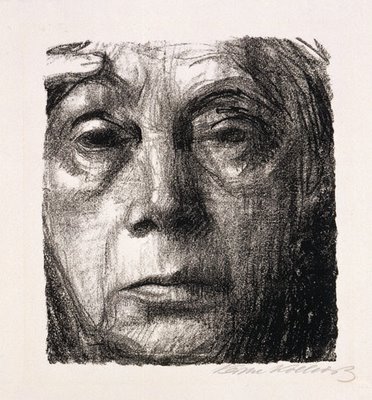 Self portrait
Self portrait
Es lohnt sich / Es lohnt sich nicht #7
16 September: Kloster Eberbach
